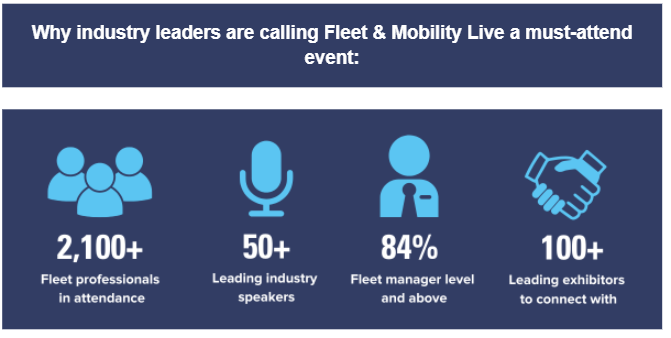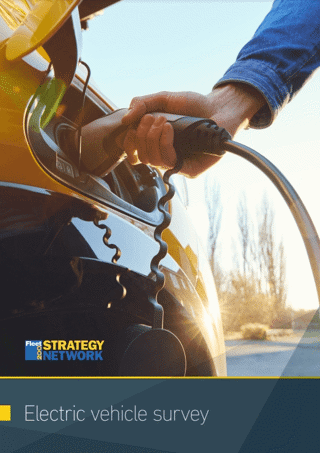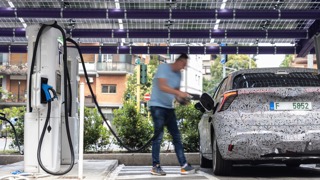Dr Philipp Seidel, principal at Arthur D. Little (ADL)
We’re currently going through a "once in a century” disruption, as the vehicles we drive switch from fossil fuels to electric energy.
Yet despite the mature globalisation of the automotive industry, the adoption of electric vehicles (EVs) differs significantly around the world.
To assist EV decision makers, Arthur D. Little (ADL) has set up a methodology to evaluate the readiness of 15 countries for electric mobility.
Based on a detailed analysis of key market drivers and using standardised evaluation metrics, we’ve produced a Global Electric Mobility Readiness Index – GEMRIX 2022 – which details how markets compare with each other.
One of the first things to note is the massive jump in EV adoption that has happened globally over the last two years.
Yet our research clearly shows one country that’s literally miles ahead of everybody else in EVs: Norway.
It’s quite a paradox that a country which became rich by drilling for and exporting fossil fuels is the only market worldwide that is already fully EV ready, yet with a score of 115 on the GEMRIX 2022, EV is the clear choice in Norway.
A score of 100 and higher means that it’s equally beneficial to buy and operate an EV as an internal combustion engine (ICE)-based vehicle – right now, Norway is the only country where this is the case.
The rest of the benchmarked countries can be broadly categorised into three clusters according to their readiness for EV adoption.
China, Germany, UK and Singapore are ambitious followers, with around 80 points.
In these countries, switching to EV is no longer just an option for enthusiastic pioneers, but a valid choice for the mass market.
In the near future, all four countries have political agendas to reach equality between EV and ICE, and as such, local consumers have seen a major jump in recent years in the number of available EVs and charge points.
The Emerging EV Markets – the US, Japan, UAE, and Thailand – have scores between 40 and 60.
These markets still show both significant financial and operational drawbacks in relation to EVs.
However, all of them are investing heavily in electric mobility and will likely catch up soon.
Note that the US plays a special role in this group, as the prerequisites for successful EV roll-out in East and West Coast states are very good, yet in large parts of the country, especially the central states, ICE cars remain the emotionally and economically preferred option.
Finally, the Starter countries are Mexico, India, Brazil, Indonesia, Vietnam and South Africa.
Electric mobility is beginning to enter the conversation, but given these countries’ socio-economic position, EVs are not a priority among politicians seeking election.
In these markets, choice of vehicle is driven more by cost and utility considerations rather than a green agenda. However, some uptake is happening in the two- and three-wheeler space, which in Starter countries accounts for a significant share of the overall market.
GEMRIX 2022 shows that market readiness and EV adoption are driven by different factors in different regions. In some markets, environmental friendliness is key, while in others, cost and ease of use are the main reasons for adoption.
Industry players in each country contribute significantly to the attractiveness of EVs to fleet customers.
The number of vehicles offered and how they are brought to market can spark the interest of businesses or prevent them from even thinking about EVs if the offer is not attractive.
This involves a combination of factors, including the number of products offered and the segments covered by them, product quality, design and concept creativity, as well as pricing.
Infrastructure readiness is also a prime consideration.
Even in Norway, most EV charging still occurs through private options today.
However, a dense public infrastructure lowers psychological barriers for customers and increases EV usability, for fleet as well as consumers.
It is also a precondition to reach customer segments without private parking and charging opportunities.
But perhaps our key takeaway is that legislative and regulatory bodies play a central role in shaping the market for EVs.
Ultimately, every country can adopt EVs in the coming years if their respective governments promote investment accordingly.
> Interested in comparing electric vehicle data? Check out our EV tool.
> Interested in ensuring the efficient use of EVs. Check out our dedicated editorial sections: Insight & policy | EV news | Charging & infrastructure | Costs & incentives | Benefit-in-kind | EV case studies | EV road tests




















Login to comment
Comments
No comments have been made yet.